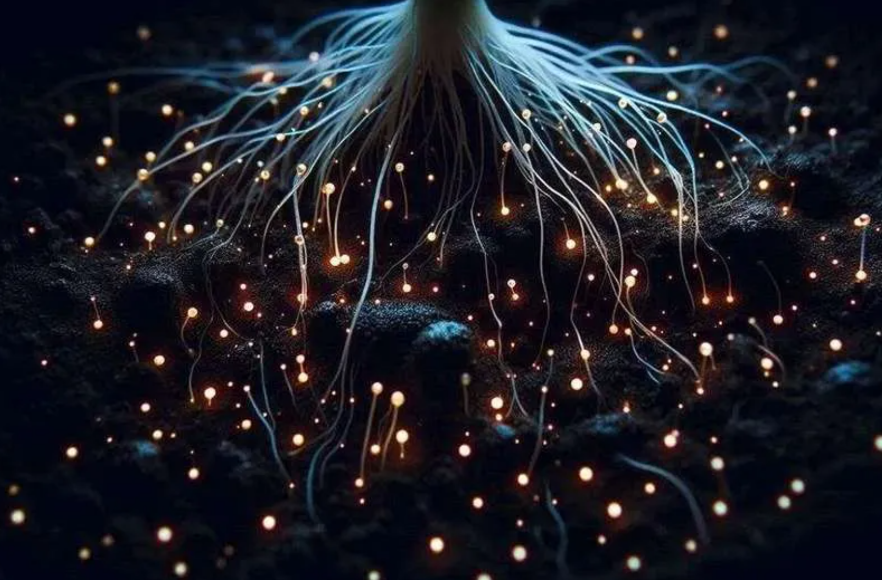
Exhibition time: 17-19 March, 2026 Shanghai, China
 中文
中文

Exhibition time: 17-19 March, 2026 Shanghai, China
 中文
中文
Hydrogels can capture vapor from the air to water plants. Now scientists have infused them with slow-release fertilizers as well.

Self-watering, self-fertilizing soil is now a step closer to reality. Scientists have developed little beads called hydrogels that can capture water from the ambient air, and use it to irrigate soil—while simultaneously dosing the surrounding plants with nutrients, too.
The study, published in ACS Materials Letters, is the latest step in a research project at the University of Texas at Austin which has been advancing the development of hydrogels for years. The gels are made from a matrix of polymers that are ‘hygroscopic’, meaning they absorb water—in this case, from vapor in the air—swelling as they go. Hydrogels are then designed to release this liquid load when triggered by certain stimuli, including changes in soil pH or temperature.
Previous research from the lab has already successfully shown that the gels can capture moisture from the air even in dry conditions—possibly helping agriculture to spread into arid landscapes. What’s new in this round of research is the addition of calcium fertilizers to the gel’s polymer matrix. “This integrated function of hydrogels is unprecedented,” says Guihua Yu, professor of materials science and engineering, and mechanical engineering, at the University of Texas at Austin, and lead author on the research.
So, to see how well hydrogel 2.0 works in soils, the researchers ran a sequence of experiments, which for starters measured the pace of water and fertilizer release. In the experiments, they infused the air with differing levels of humidity ranging from 30 to 90%. Under high humidity conditions, they found, the gels not only absorbed a substantial amount of the water vapor, but gradually released almost all of it over a four-hour period, triggered by 40 °C temperatures.
Next, they were curious to see how effectively the gels delivered the fertilizers. As it turns out, the calcium fertilizer they used is also hygroscopic, meaning it enhances the gels’ water-absorbing capacity. So when the gel contacts water vapor, the water-loving fertilizer gets dissolved within, further hydrating the gel. Crucially, the researchers wanted to see if they could pace the release of the dissolved fertilizer, or if it would end up gushing out all in one go—which is the problem behind over-fertilizing farmlands and causing pollution downstream.
They tested multiple different irrigation scenarios until they found the sweet spot: under 90% relative humidity but with less frequent irrigation, and triggered by rising temperatures, the fertilizer within the gel escaped in just tiny amounts each day. In fact, experiments showed that after 16 days under this scenario, only 17% of the fertilizer had leached into the soil. On the other hand, when the gels were supplied with more regular doses of water, the fertilizer leached out faster—though crucially, none of the scenarios released more than 60% fertilizer in the first 16 days.
This showed that it may be possible to ration the nutrient flow from hydrogels to the plant, and limit some of the downstream impacts of excessive fertilizers. The researchers think the mechanism at play here is that under warmer temperatures, the gels switch from a hydrophilic (water-loving) to hydrophobic (water-repelling) state and start to shrink, which slowly reduces the pore size and the exit points for the dissolved fertilizer, slowing its release over time.
But how did all this work with real plants in the mix? In several experiments on germinating radish seeds, the researchers found that plants were more likely to survive when grown in soil infused with the hydrogels, compared to plants grown in nutrient-deprived sandy soils that lacked the gels. That’s proof that the hydrogels effectively release water and nutrients to the plants.
Not only that, but the hydrogel soils grew plants that were healthier and stronger, too. Plants grown in hydrogel soils under medium and high-humidity conditions had significantly longer stems and more buds than plants whose soils didn’t contain hydrogels. In fact, the average stem length of plants grown at 90% relative humidity with hydrogels grew stems that were more than three centimeters longer than their counterparts.
Plenty more research is needed to bring hydrogels into the field. But with their added nutrient bonus, they may be closer than before. As agriculture increasingly presses on threatened water resources, whilst polluting those same resources with fertilizer, hydrogels present a neat potential answer to that twin threat.
“The key benefit of incorporating these gels into the soil is that it allows farmers to use less water and fertilizer,” says Yu, who adds that he and his team plan to start conducting field tests soon. “Our next step will be also leveraging naturally abundant biomass to make [the gels] more cost-effective and biodegradable,” he says.
Source:www.anthropocenemagazine.org